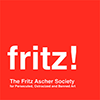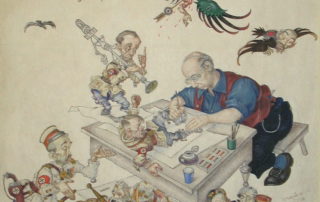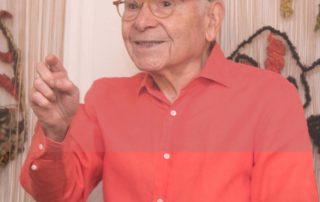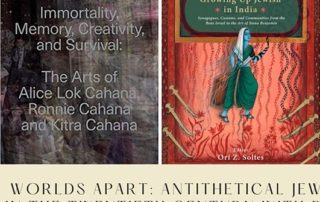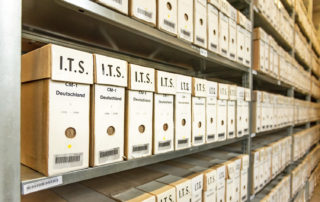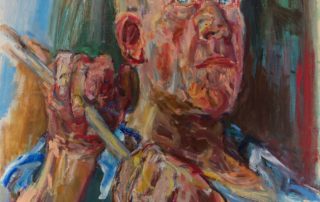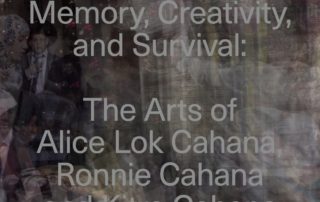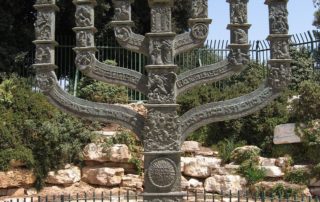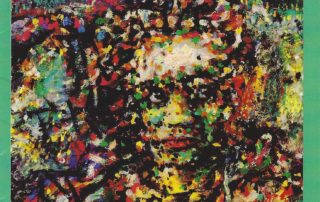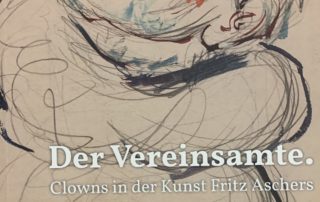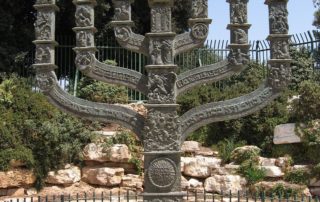Rachel Stern2021-03-31T18:24:40-04:00March 31st, 2021|Newsletter|
Dear Friends, What a surprise: The Arolsen Archives own a copy of a name list of Jews released from the concentration camp Sachsenhausen on December 23, 1938 with Fritz Ascher's name! Copy of Doc. No. 4094051#1 in conformity with Arolsen Archives Name List of Jews Released from the Concentration Camp Sachsenhausen on December 23, 1938 I am overwhelmed by your interest in our crowdsourcing initiative “everynamecounts,” in which we are partnering with the Arolsen Archives to help build the largest digital memorial to the victims of Nazism. On our designated project page, you can watch the recording of our Zoom event with Floriane Azoulay (Director) and Giora Zwilling (Deputy Head [...]
Rachel Stern2021-06-14T18:07:03-04:00March 31st, 2021|Events, Past Events|
THIS EVENT WAS NOT RECORDED. After surviving the Holocaust, Shoshana Comet (1923-2012) could not speak about her experiences. One day in 1968, Shoshana announced that she had joined a course on weaving. At home, she wove five 6-foot high tapestries which served as a means to unshackle herself from her holocaust trauma. Shoshana then trained to become a psychotherapist, working with Holocaust survivors and their families who had been scarred by their experience. (See Ted Comet, Transforming Trauma Into Creative Energy, March 10, 2014) Ted is giving tours of Shoshana's tapestries to diverse groups, including students from Germany. For the past year, these tours are virtual, developed and conducted by DOROT, an innovative leader in designing intergenerational programs, supportive services and opportunities that enhance the [...]
Rachel Stern2022-02-18T06:23:24-05:00March 30th, 2021|Events, Past Events|
Conversation with Dr. Meital Orr and Dr. Ori Z. Soltes Opening remarks Rachel Stern, Fritz Ascher Society forPersecuted, Ostracized and Banned Art Anke Yael Popper, Embassy of the Federal Republic of Germany Organized by the Center for Jewish Civilization at Georgetown University in Washington D.C. This program delves into the following books by Ori Z Soltes: Immortality, Memory, Creativity, and Survival: The Arts of Alice Lok Cahana, Ronnie Cahana, and Kitra Cahana This book reviews the story of a 14-year-old girl from Sarvar, Hungary who was deported to Auschwitz by the Nazis, together with her family. She was the sole survivor of the deportation and transit through three different camps, ended up marrying a rabbi, moving to Houston, Texas, [...]
Rachel Stern2021-03-07T19:20:48-05:00March 7th, 2021|Newsletter|
Dear Friends, We now are embarking on an exciting new project, which is only successful with everyone’s help: starting Wednesday, March 10 we are partnering with the Arolsen Archives to help build the largest digital memorial to the victims of Nazism. And we actually are the first US organization to partner to do so. We invite you to join us on Wednesday, March 10 at 12:00pm ET for the Zoom event “Building the Largest Digital Memorial to the Victims of Nazism: The Arolsen Archives” to hear Floriane Azoulay (Director) and Giora Zwilling (Deputy Head of Archives) from the Arolsen Archives speak about the importance of the documents at Arolsen Archives for Holocaust research, and the role [...]
Rachel Stern2022-02-18T06:37:23-05:00March 4th, 2021|Events, Past Events|
The International Tracing Service (ITS), since 2019 called Arolsen Archives, was established by the Allies in 1948 as a central search and information center. They house the world’s most extensive collection of documents about the victims of National Socialist persecution, including documents from Nazi concentration camps, ghettoes and penal institutions, documents about forced laborers, and documents from the early post-war period about Displaced Persons, mainly Holocaust survivors, former concentration camp prisoners, and forced laborers. People who had fled the sphere of influence of the Soviet Union for political reasons are also included. The archive's holdings consist of 30 million documents in total and belong to UNESCO’s Memory of the World. At this event, Floriane Azoulay (Director) and Giora Zwilling (Deputy [...]
Rachel Stern2022-02-18T06:04:58-05:00March 3rd, 2021|Events, Lectures, Past Events|
The Austrian artist Oskar Kokoschka (1886-1980) achieved world fame with his intense expressionistic portraits and landscapes. Rüdiger Görner, author of the first English-language biography, depicts the artist in all his fascinating and contradictory complexity. He traces Kokoschka’s path from bête noire of the bourgeoisie and a so-called ‘hunger artist’ to a wealthy and cosmopolitan political and critical artist who played a major role in shaping the European art scene of the twentieth century and whose relevance is undiminished to this day. In 1934, Kokoschka left Austria for Prague, and in 1938, when the Czechs began to mobilize for the expected invasion by the German Wehrmacht, Kokoschka fled to the United Kingdom, where he remained during the war. Although he [...]
Rachel Stern2021-02-26T06:28:48-05:00February 26th, 2021|Selected Publications|
Alice Lok Cahana (1929 - 2017) was a teenager from Sarvar, Hungary who survived four different camps in the last year of the war, losing every member of her extended family, except for her father and including her beloved older sister, Edith—who survived, only to perish from illness immediately after liberation: she entered a hospital, and Alice never saw her again. Alice swore an oath to herself while in the camps that, if she survived, she would become an arOst and draw rainbows out of the ashes of her experience. She not only became an artist, she produced three offspring, and among them her oldest son, Ronnie, intensely responsive to his mother’s history, became a poet. Ronnie’s oldest daughter, Kitra, [...]
Rachel Stern2021-02-25T20:35:24-05:00February 25th, 2021|Newsletter|
Dear Friends, Did you ever wonder who created the large Menorah that is standing in front of the Knesset in Jerusalem? We’ll bring the story to your screen, on Wednesday, March 3, 2021, at 12:00pm US ET! Christian Walda (Dortmund, Germany) will speak about “Becoming Jewish: The Sculptor Benno Elkan (1877-1960),” followed by focused presentations by Wolfgang E. Weick (Dortmund) and Ori Z. Soltes (Washington DC). Please register for this Zoom event HERE. Benno Elkan, Menorah, 1956. Knesset, Jerusalem The oeuvre of the German born sculptor was largely made up of commissions. In the beginning, he mainly created tombs. Medals, portrait busts of well-known personalities, monuments to victims and [...]
Rachel Stern2021-02-24T05:40:28-05:00February 24th, 2021|Selected Publications|
Ascher composed, wrote, drew and painted: Between 1942 and 45 - three long years - he hid from the persecution of the fascists in the basement of a bombed-out house in Berlin-Grunewald. Immobility, loneliness and hunger as well as the fear of betrayal and discovery, torture and death did not leave him during this time. In this situation he found poignant words for his “unpainted pictures”. He conveys both the intensity of his thought processes and his sensitivity for - and his use of - words as well as their nuances and sound patterns. Above all, he demonstrates the indomitable spirit of the artist Fritz Ascher, which no circumstance, regardless of the medium, can prevent from creating with vehement and [...]
Rachel Stern2021-02-24T04:27:46-05:00February 24th, 2021|Selected Publications|
For Fritz Ascher, the ambivalence of the clown as an outsider in society was a central motive. Fritz Ascher found his Bajazzo motif during the First World War, a time of political, societal and social upheaval. In her introduction to this catalog, Rachel Stern traces Ascher's world as well as his artistic development and illuminates the further life of the persecuted and ostracized artist through the horrors of the Nazi regime. In the catalog essays, the authors Jutta Götzmann and Ori Z. Soltes highlight Fritz Ascher's Bajazzo works in a focused way. In addition to Ascher's Bajazzo works, the catalog also includes depictions of landscapes created after 1945, which clearly show the personal and artistic break through experiencing persecution, ostracism by [...]
Rachel Stern2022-02-18T07:06:06-05:00February 22nd, 2021|Events, Lectures, Past Events|
Born 1877 in Dortmund, the sculptor Benno Elkan (1877-1960) first studied painting in Munich and Karlsruhe. At the end of his studies, he turned to sculpture. As a young artist, he spent time in Paris, Rome, and Frankfurt. Elkan’s oeuvre was largely made up of commissions. In the beginning, he mainly created tombs. Medals, portrait busts of well-known personalities, monuments to victims and candelabras follow, partly for the religious (Jewish and Christian) context. Elkan fled persecution by the German Nazi regime to Great Britain in 1934and lived with his family in London until the end of his life. Perhaps the most important work besides the Menorah in Jerusalem (1956) was never built: Memorial to the Defenseless Victims of the Bombing [...]
Rachel Stern2022-02-18T06:31:18-05:00February 17th, 2021|Events, Lectures, Past Events|
During the first four decades of the twentieth century, Polish Jewish artist Arthur Szyk (1894–1951) was best known for his richly detailed book illustrations and magnificent illuminations on Jewish themes. He portrayed the Jews as a heroic nation that had resisted oppression through the ages and eventually triumphed. His Jews were fighters for their own freedom and the freedom of others. Szyk sought to redefine how the Jews viewed themselves and how others viewed them. His works thus challenged the notion that Jewish history was merely one long saga of suffering and, at the same time, refuted the then common antisemitic canard that the Jews were a cowardly people. With the coming to power in Germany of Adolf Hitler [...]
